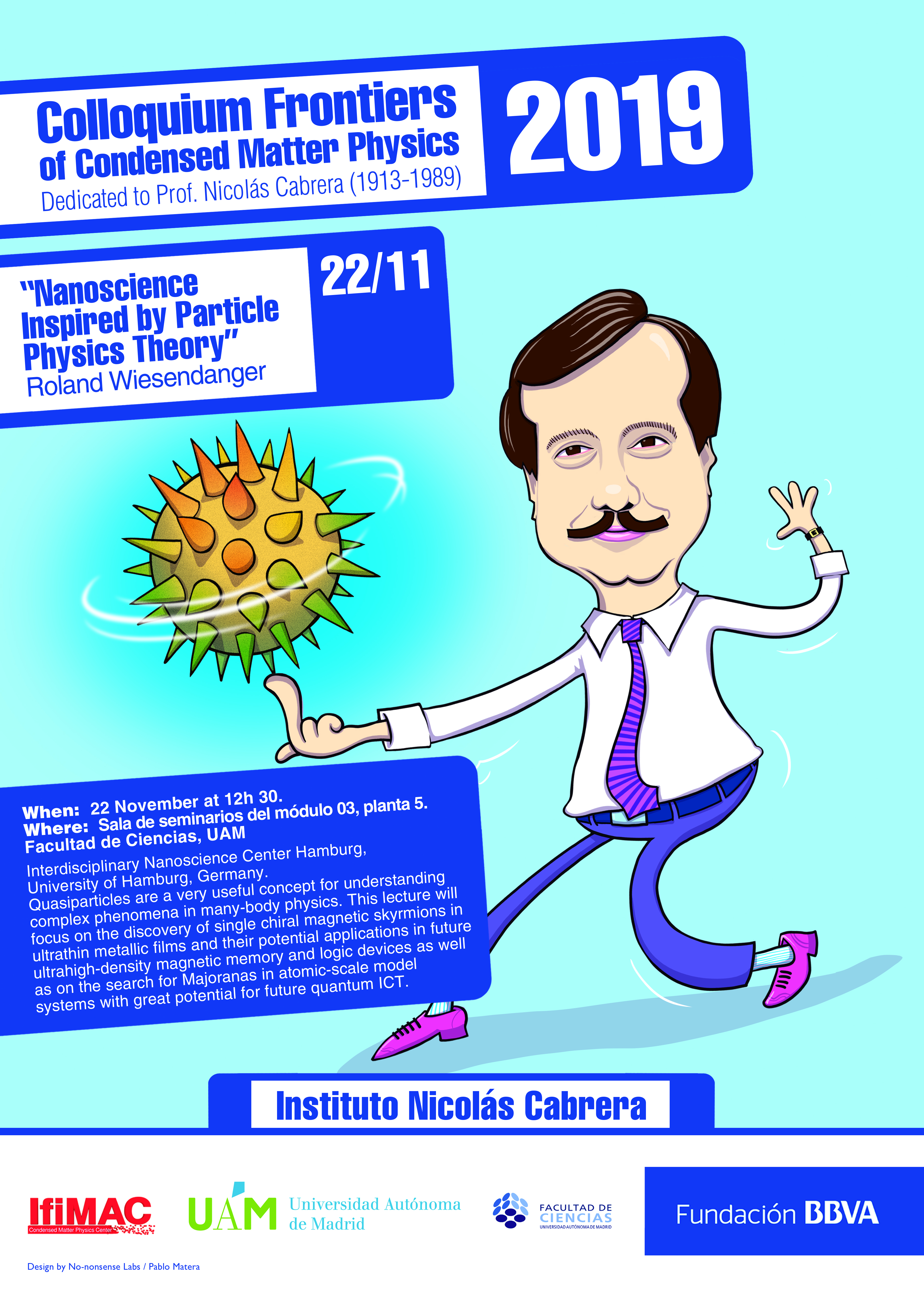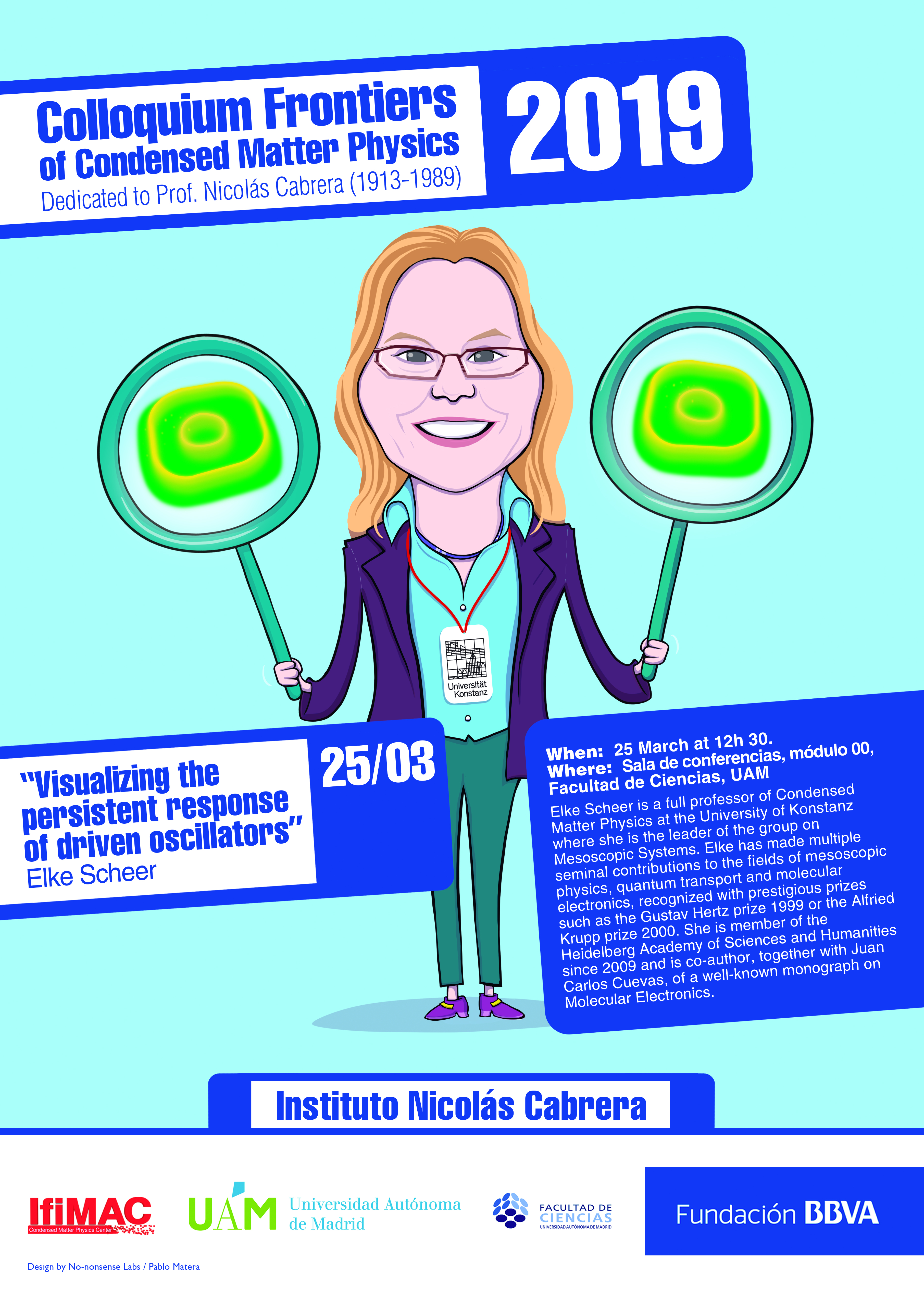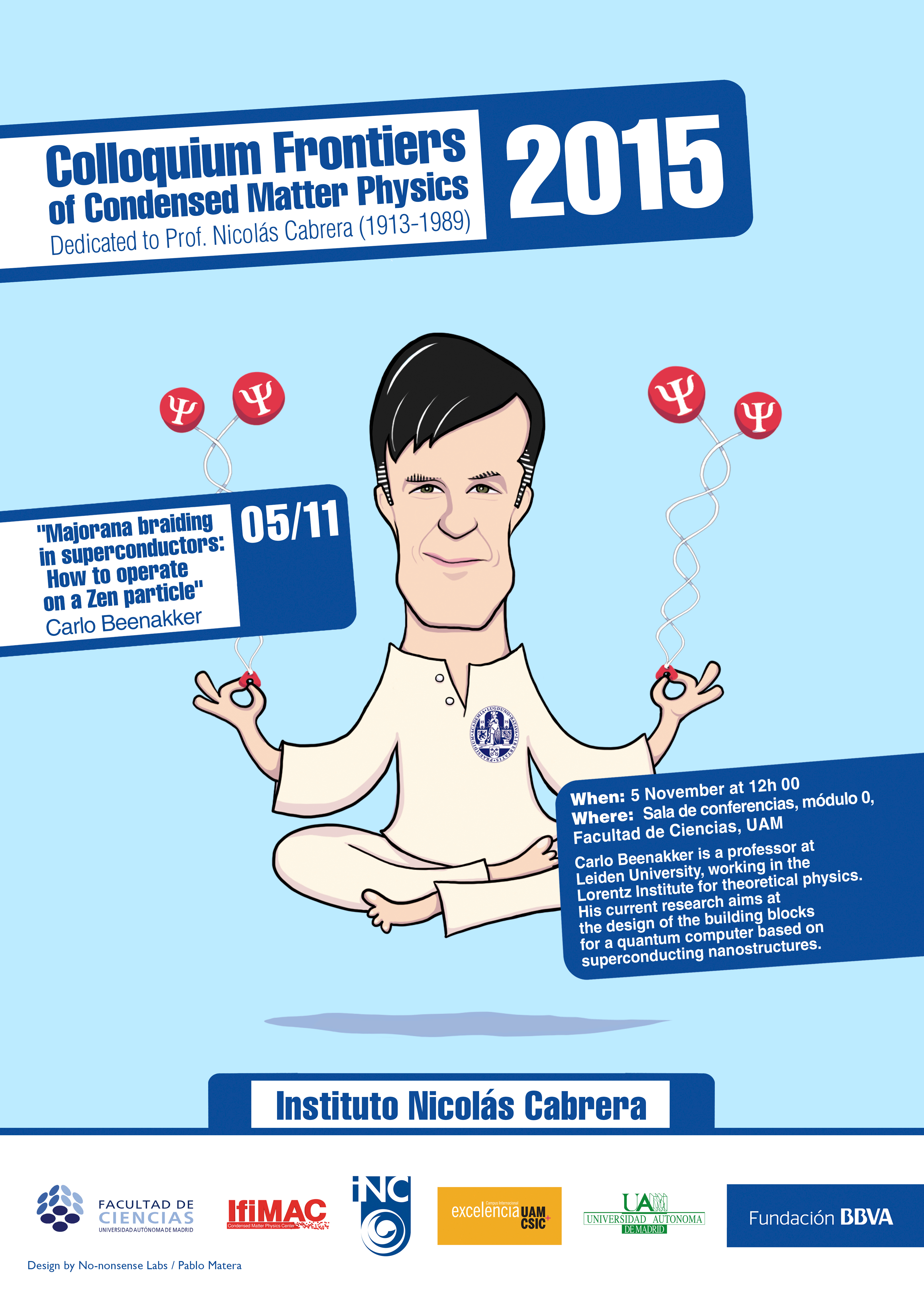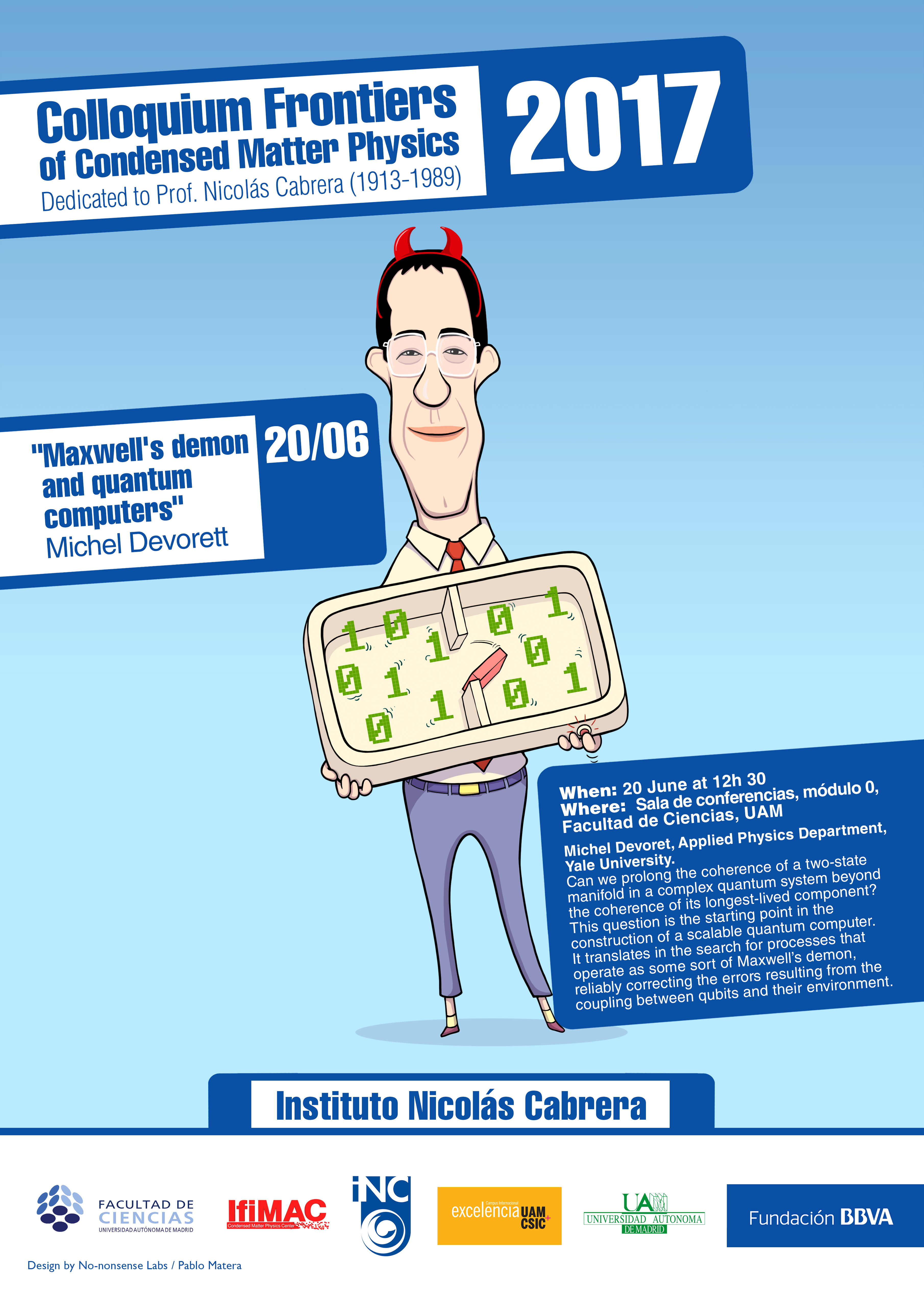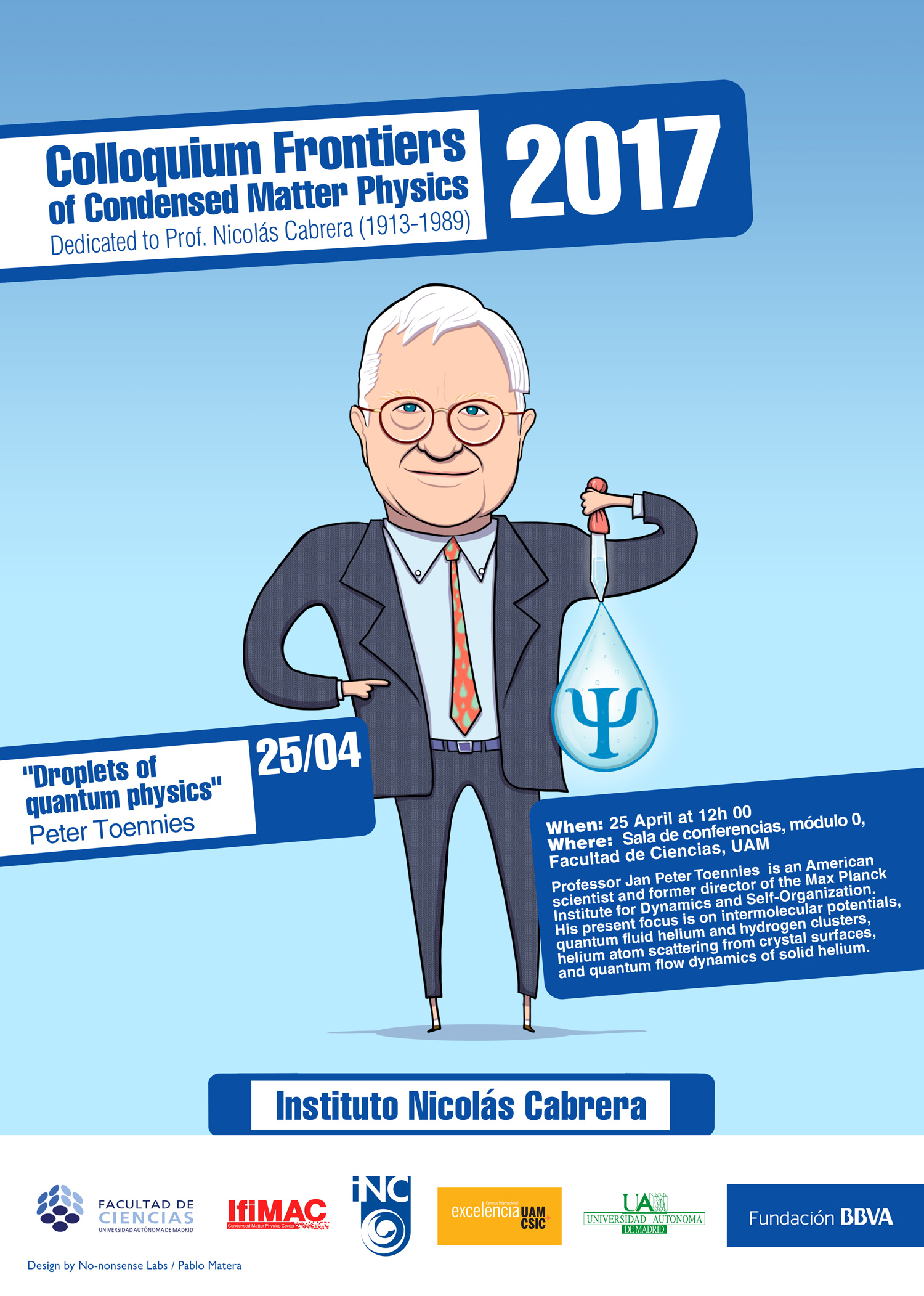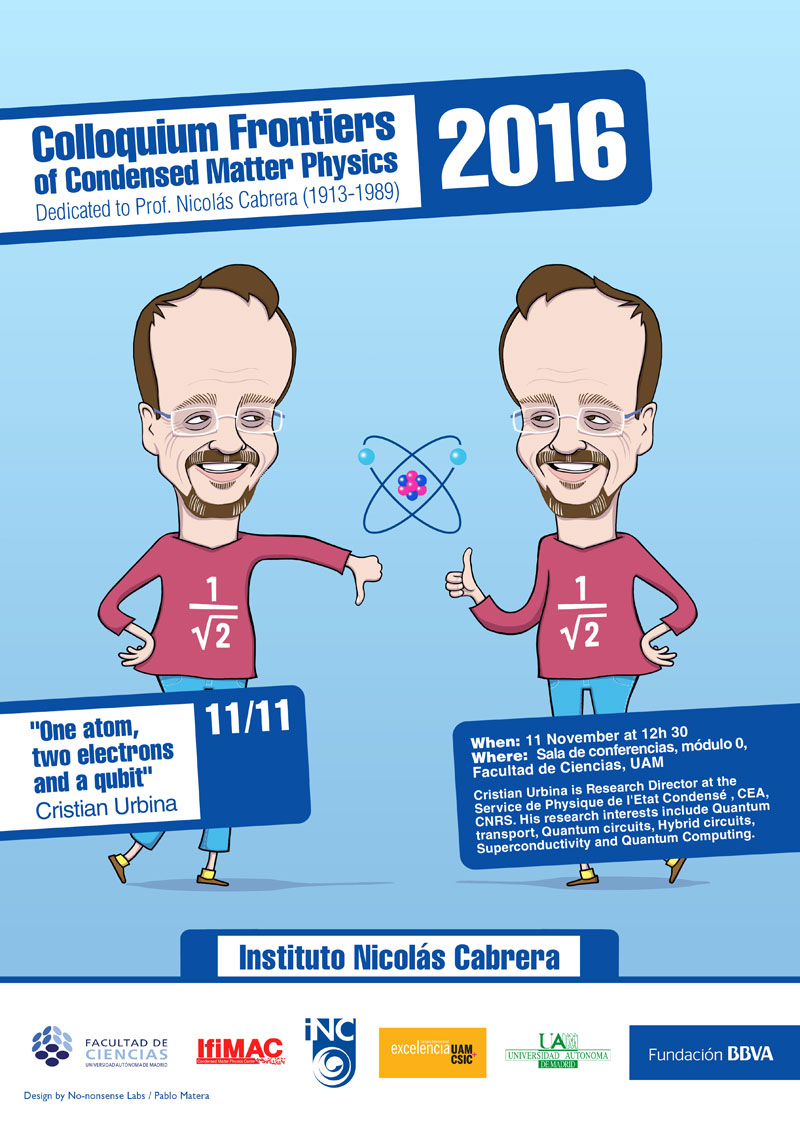
Colloquiums INC 2016: An atom, a Cooper pair, a Qubit
“An atom, a Cooper pair, a Qubit”
Cristian Urbina
11 November at 12h 30
Sala de conferencias, módulo 0
Facultad de Ciencias – UAM
A supercurrent can flow through a weak link—such as a thin insulating barrier, nanowire or molecule—between two superconductors. This famous effect, for which B. Josephson received the Nobel Prize in 1972, has had a great impact on both fundamental and applied science. It is the basis for a variety of devices used in fields as diverse as quantum information, magneto-encephalography and radio astronomy. Successful as they are, these devices overlook the existence of an internal degree of freedom, inherent to all weak links, which we reveal here with experiments performed on the simplest possible one1-5: a one-atom contact.
The theory of mesoscopic superconductivity predicts that in the ground state of this many-body interacting system the entire supercurrent is carried by a single Cooper pair state localized around the contact. It also predicts the existence of an excited localized state carrying an opposite supercurrent. I will show that it is possible to coherently manipulate the quantum state of this microscopic two-level system, despite it being embedded in a continuous superconducting fluid of Cooper pairs. This system could be the basis for completely novel types of superconducting qubits.
Work done in collaboration with C. Janvier, L. Tosi, L. Bretheau, Ç. Ö. Girit, M. Zgirski, M. Stern, P. Senat, P. F. Orfila, P. Bertet, P. Joyez, D. Vion, D. Esteve, M. F. Goffman and H. Pothier.

